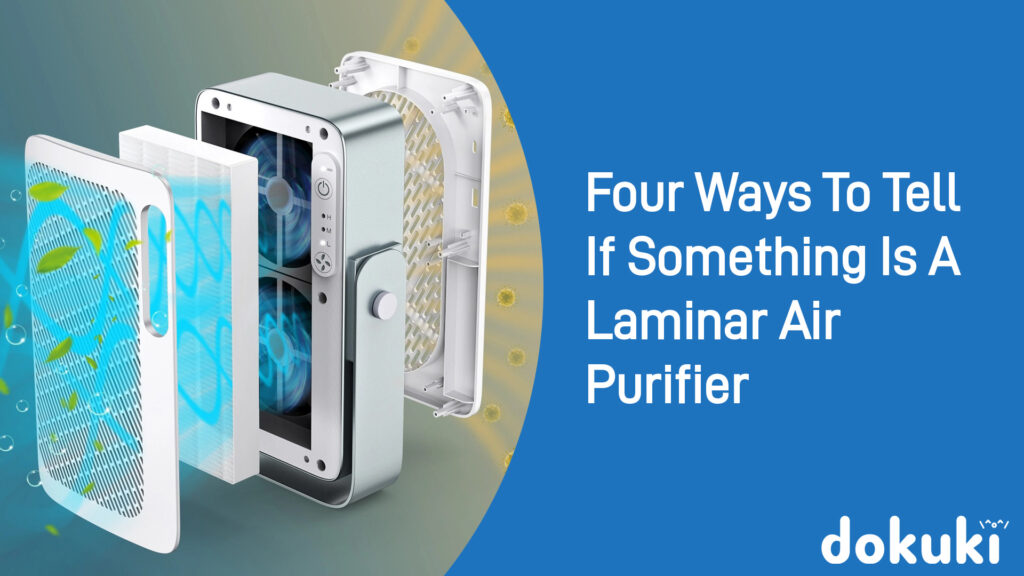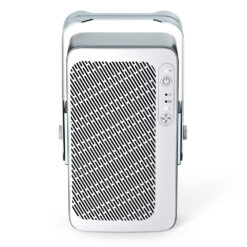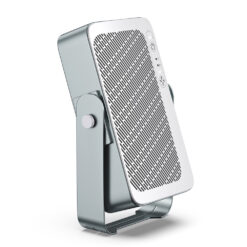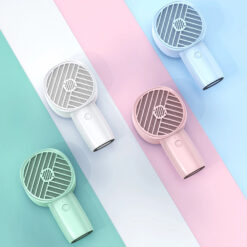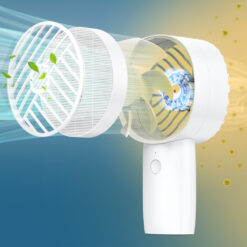A new type of air purifier called a laminar air purifier delivers a stream of clean air directly to the user’s face, reducing their exposure to viruses, allergens, and pollen in the air. With laminar flow technology, the user can breathe 90% to 100% cleaner air compared to their surroundings.
Given that there are many portable air purifiers in the market, how can you tell whether something is a laminar air purifier that utilizes laminar flow technology? Let’s find out.
1. Distance between the user and laminar air purifier

Laminar flow is hard to pull off and extremely sensitive to turbulence. This is the reason why companies that manufacturer laminar air purifiers will advise users to maintain a certain distance between their face and the laminar air purifier for maximum protection.
For example, the AirFanta 4Lite, a personal laminar air purifier that is meant to be placed on a desk, should be used 30 cm away from the user’s face for maximum protection. The closer the user’s face is to the air outlet, the higher the protection. Find out more about the relationship between distance and protection here.
A personal air purifier which doesn’t provide such information or claims that it can provide protection at a far distance (such as 100 cm) is very unlikely to be a laminar air purifier.
2. Speed settings
If a laminar air purifier has multiple speed settings, the manufacturer would usually recommend the user to use the lowest speed setting, rather than the highest. This is because at a higher speed setting, turbulence will increase, leading to air mixing with unfiltered (dirty) particles outside the laminar flow.
The AirFanta 4Lite has three speed settings – low, medium, and high. Low should be used if the user’s face is 30 cm away from the air outlet, medium for 40 cm, and high for 50 cm.
While the higher speed allows the laminar flow to travel a further distance, it comes at the cost of less clean air, as turbulence is increased.
A personal air purifier that recommends users to use at the highest setting, or one that doesn’t provide any advice on speed settings is one that is unlikely to use laminar flow technology.
3. Price
Price point is also a key factor. Personal laminar air purifiers, especially ones that could be placed on a desk and used between 30 – 60 cm away from the user’s face, usually cost between S$200 to S$350 or more due to the fans they use, build quality, and batteries.
Smaller laminar air purifiers, like the AirFanta mini, which has to be held as close to the user’s face as possible, usually cost between S$70 to S$100.
4. Air outlet

Laminar air purifiers only have a single air outlet, meaning that clean air is delivered from one side of the device, so the user knows where and how to position their face. The size of the air outlet is also another crucial factor – an air outlet that is extremely small is unlikely to be effective, as it does not have enough “space” to deliver clean air to the user’s nose and mouth.
A personal air purifier that has multiple air outlets is very, very unlikely to be a laminar air purifier.
Conclusion
With these four methods, you can easily identify whether or not a personal air purifier is a laminar air purifier that utilizes laminar flow technology.
You can also consider checking out AirFanta’s laminar air purifiers, which come in various form factors. These include the AirFanta 4Lite, a personal laminar air purifier that could be placed on a desk, and the AirFanta mini, a handheld laminar air purifier.
Laminar Air Purifier
Laminar Air Purifier

